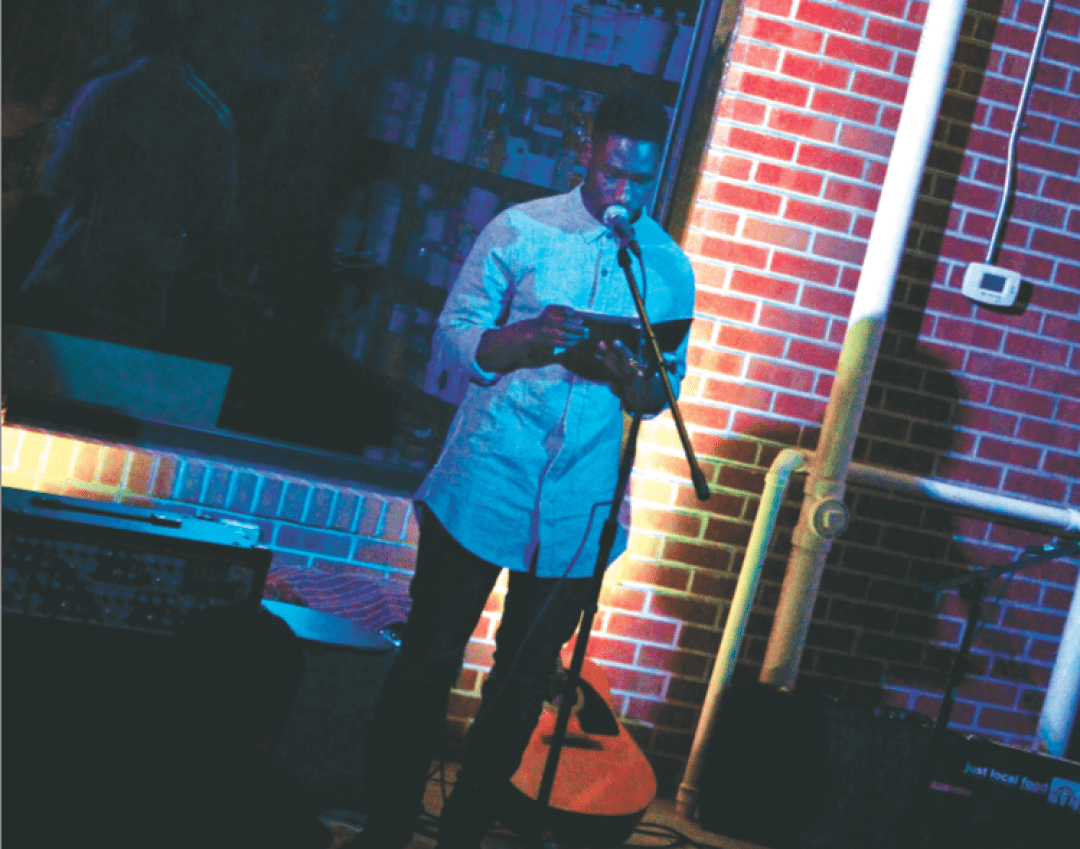Twig, a new Midwestern-focused poetry magazine, proves zines aren’t dead

Serena Wagner had something of a epiphany a few years ago while sitting in her driveway one November night and pondering her long-held idea of launching a creative magazine.
“There’s a lot of twigs around,” she thought, looking at the branch-littered yard illuminated by her headlights. “I bet there’s a lot of other writers around.”
While poets and artists elsewhere may fancy themselves to be precious flowers or sun-dappled leaves, the humble, delicate twig is as good a metaphor as any for the unpretentious mentality of Midwestern creativity. With twigs as her inspiration, Wagner began pursuing a project that culminated this month with the publication of the inaugural issue of Twig, self-described as “an independent art zine collective.” Wagner put out a call to friends and strangers in and around Eau Claire to submit their poems, and verses tumbled in like so many wind-blown twigs. Wagner curated the submissions, designed and illustrated the pages, and then had them printed in a pocket-sized publication. The magazines are hand-bound – Wagner studied bookbinding under UW-Eau Claire’s Wanrudee Buranakorn – and some are even available in a hand-stitched felt pouch.
“It brings poetry back into focus in an age where all we’re reading are clickbait headlines.”– Serena Wagner, on her new poetry zine, Twig
Twig could be considered the local literary equivalent of microbrewed beer or artisanal cheese. It’s consciously handcrafted and – while it was designed on a computer and sold online – it’s a celebration of the old-fashioned, analog joy of the printed word. Specifically, the carefully crafted printed word – each turn of phrase considered, each syllable weighed. It’s a throwback to an earlier era, before a young writer’s first instinct was to create a blog. In the pre-Internet age, that meant creating your own zine.
“Whether it’s good or not, it’s right in front of you,” Wagner says of her preference for printed poetry. “You don’t have to click a million links to find it.” The tangible magazine, she adds, “Brings poetry back into focus in an age where all we’re reading are clickbait headlines.”
Wagner, an Eau Claire native, graduated from UW-Eau Claire in 2014 with a BFA in graphic design and (full disclosure) works at Volume One, although Twig is a completely independent publication. (Astute Volume One readers will see some other familiar names in Twig, including Eric Christenson and Alex Tronson.) While the idea for Twig has simmered in Wagner’s mind for years, her most recent motivation came from internationally renowned poet Naomi Shihab Nye, who spoke at UW-Eau Claire in October. Even if you read just one poem a day, Wagner recalls Nye saying, your mind will be taken to a different place.
The first issue of Twig contains 16 poems by eight poets, all of them living in or originally from the Chippewa Valley. In future issues, Wagner hopes to cast a wider net, both geographically (attracting writers from other parts of the Midwest) and demographically (she notes that all of the poets are 25 and under).
In addition to being proudly analog, Twig is also remarkably understated. While the zines of the 1990s were often visual riots of cut-and-pasted Xerox imagery, Twig is minimalist in its appearance, with each poem accompanied by a simple, elegant glyph designed by Wagner. In the future, she’d like other artists to provide illustrations for each poem. Issue No. 1 of Twig is also free of introductions, manifestos, or egotism; in fact, Wagner’s name only appears once, under a poem she penned herself.
Despite its humility, or perhaps because of it, Twig is filled with rich, beautiful poetry, awash in imagery both regional (Christenson’s “trashy deer hunting bars that / choke you with cherry bombs and slap / your teeth with hard liquor when you / need it”) and universal (the unrequited loved encapsulated by Hannah Kreibich in the lines “Today I will break a toe, / just because you work in a hospital”).
 Twig was unveiled with a party and reading Nov. 13 at Ambient Inks on Water Street. Now that the first issue has been released, Wagner intends to make Twig a quarterly publication. In addition, under the Twig umbrella, she hopes to use her talents to facilitate other publishing projects by writers, photographers, and artists, helping them lay out and bind their own works.
Twig was unveiled with a party and reading Nov. 13 at Ambient Inks on Water Street. Now that the first issue has been released, Wagner intends to make Twig a quarterly publication. In addition, under the Twig umbrella, she hopes to use her talents to facilitate other publishing projects by writers, photographers, and artists, helping them lay out and bind their own works.
In other words, expect more twigs.
“I’ve always been fond of books and magazines and print,” Wagner says. “I think there’s something meaningful and tangible about print that you don’t get online.”
Learn more about Twig and find out how you can get your copy by visiting facebook.com/twigmag, instagram.com/twigmag, and etsy.com/shop/twigmag.






















